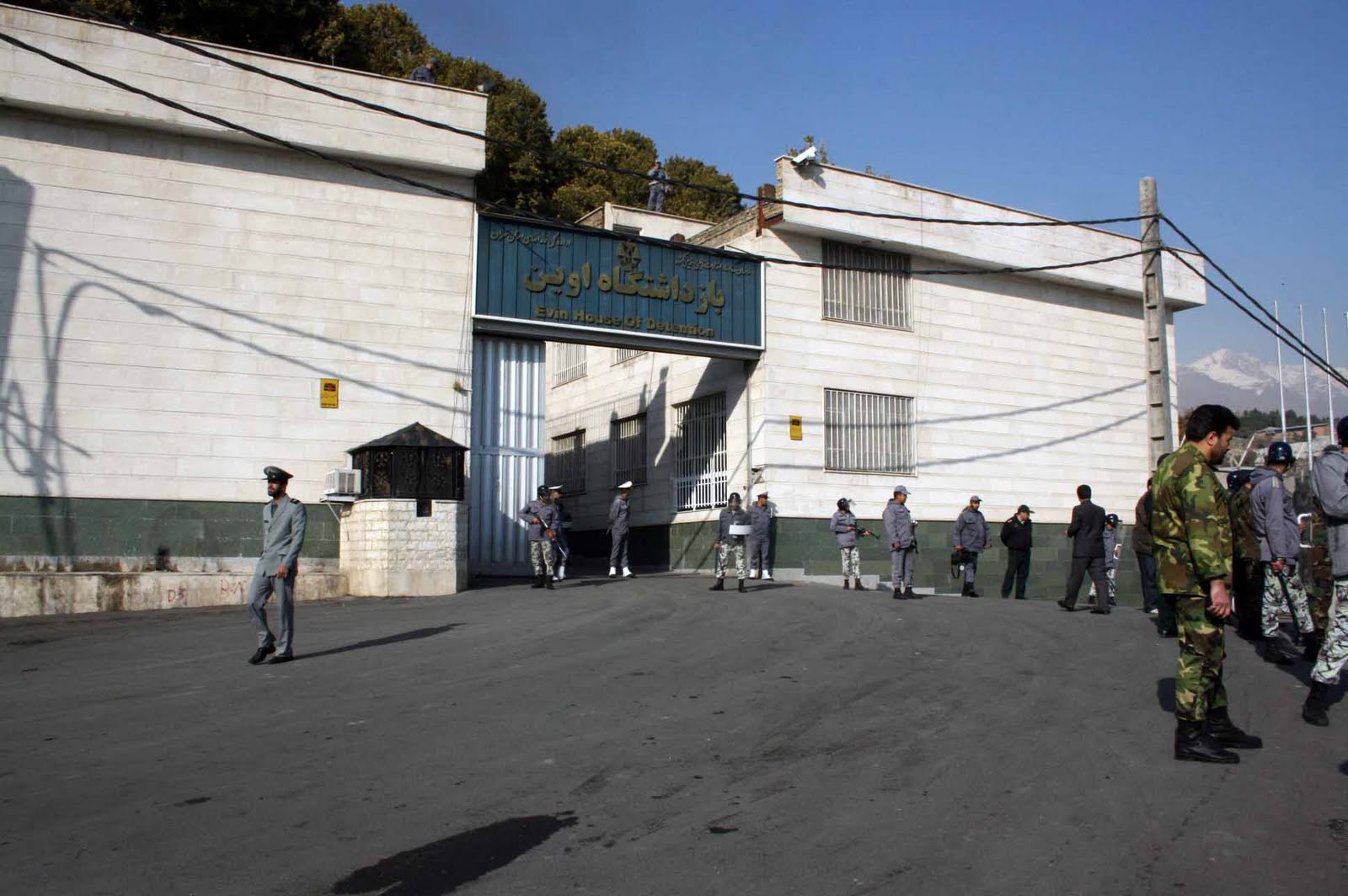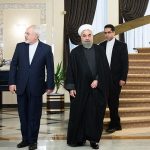by Sussan Tahmasebi
According to reports by the Committee on the Rights of the Detained, a 22 year old held in the quarantine ward of Evin prison in Tehran died in detention. The committee, set up by human rights activists and former political prisoners, aims to track the situation of those detained in the recent protests in Iran, explained that prisoners released from Evin on Sunday provided the information on Sina Ghanbari’s death and that the cause of his death was unclear.
On Monday, Tayebeh Siavashi, an MP from Tehran, announced that she had inquired about the case and that security officials had explained that Ghanbari had committed suicide while in detention. People are demanding accountability and are angry at the news, which has only increased concern about the situation of the more than 1,700 protesters, according to official figures, who have been arrested during the recent unrest in Iran.
The arrest of student activists started after students at some universities staged protests in support of national protests, which started on December 28 in Mashad and quickly spread across the country. Iranians and foreign observers alike have widely criticized the mass arrest of student activists as unnecessary and illegal.
Activists on social media and especially Twitter have urged Iranian MPs to pressure security agencies to quickly release student activists and refrain from charging them. Parvaneh Salahsouri, a Tehran MP who has been following up on the situation of arrested students, spoke to Jame’ No website about her inquiries into the cases. She explained that the Ministry of Intelligence was behind the arrest of 90 student activists.
Also, Seyed Farid Mousavi, another MP from Tehran, reported in a tweet that [security] officials had explained that the majority of students were arrested as a “preventative measure.” In fact according to reports, most of the students arrested had not participated in protests and were arrested outside of university grounds or in their homes. In an interview with the Iranian Labor News Agency (ILNA), another MP from Tehran Mahmoud Sadeghi criticized the arrests, saying that instead of “preventing unrests, they will inflame them.” He further explained that a committee has been set up in the Ministry of Science and Higher Education to follow up the cases of the detained students, all of whose whereabouts, except for 10, have been identified.
Sufis seem to also have fallen victim to preventative arrests. Revolutionary Guard security forces have reportedly arrested five members of the Daravish Gonabadi order on January 1, the third day of unrest. Sufis have since been holding a sit-in outside of Evin prison in Tehran, calling for their release.
Growing Concern for Detained Protesters
According to official reports, 1,700 persons have been arrested in relation to the unrests. The Ministry of Interior reported that 90% of those arrested are youth and teenagers under age 25, including high school students. Although many officials, including from the Minister of Education and members of Parliament as well as local officials, have promised to follow up on the situation of detained high school students, little information exists about their numbers, why they were arrested, and where they are being detained.
Shahram Rafizadeh, a journalist and former political prisoner, explains: “the Parliament can use powers it has through the Commission on Article 90, to supervise and investigate complaints about other branches of government. It can also use its powers to begin systematic inquiry into the situation of the detained as well as those killed.” The current parliament, with dozens of reformists and moderates, has not taken steps to ensure accountability with respect to the recent protests. Rafizadeh explains further that “while the reformist parliament was concerned with human rights as a high priority, the different approach of the current parliament can be attributed to the changed nature of the reform movement and their different political priorities altogether.”
Meanwhile, there is growing concern about the 1,700 protesters arrested. It remains unclear which security agency has arrested these young and inexperienced protesters, where they have been taken or where they are being detained. Many human rights activists are concerned that their rights will not be observed in detention. There is also growing concern about the conditions under which they are being held.
According to official reports, 450 persons have been arrested in Tehran, which means that over 1,200 have been arrested in provincial cities, many of which lack proper prisons or have prisons with substandard conditions.
Shiva Nazar Ahari, a human rights activist and former political prisoner, commented on Twitter that: “Judge Pirabbassi had a particular affinity for the prison in Izeh, so he issued sentences [for many] which included terms served in exile in Izeh. But Izeh didn’t have a prison.” The city of Izeh in Khoramshahr province was one of the first cities to join the protests. At least two protesters were reported killed during unrests there. According to Hedayat Ollah Khademi, an MP from Izeh who spoke to ILNA, “those arrested [in Izeh] are 16-24 years of age. Their families believe that they had nothing to do with the protests and got inadvertently involved in the unrest on their way home from school.”
Lack of prisons or space in prisons increases concerns that those detained may be held in makeshift detention centers with substandard conditions that could be harmful to their health and wellbeing. Witnesses have reported to BBC Persian that prisoners in Izeh are being held in a camp for addicts. According to BBC Persian, one of the detainees informed his family that “except for water they have not given us any food for four days.” Unconfirmed reports on Twitter have claimed that other prisoners in detention have died as a result of poor conditions, including one in Izeh.
A Potential Disaster
Activists are worried that lack of information about which security agency is responsible for arrest and detention of protesters—and the fear of some families to publicize the arrest of their loved ones—could lead to a disaster. For instance, according to reports by the International Center for Human Rights, five prisoners died in Kahrizak detention center following the 2009 elections, as a result of beatings, torture, and substandard conditions.
Tehran city council member Nahid Khodakarami urged the council to track the situation of those arrested in Tehran. She went on to say “given the bitter memories that the public, parents and family members of [the detained]…have of Kahrizak they are very worried.”
The multiplicity of official and ad-hoc groups and individuals working to address the issue of detainees has created confusion on how people should go about ensuring the accuracy of information collected and the safety of those who provide information. Shahram Rafizadeh stresses that:
the Parliament should set up a committee that is specifically charged with inquiries into the situation of the detainees and those killed in the protests. The eighth parliament with a [hardline] Principalist majority was at least able to appoint a task force to look into the situation of detainees and those killed following the 2009 protests. [The current] parliament with tens of [reformist] MPs… has failed so far to appoint a task force or established a committee of inquiry, or even issue a report on the situation of detained and killed protesters.
The death of Sina Ghanbari has increased concerns about the safety of those in detention. It has also increased the call for accountability and transparency. The demand for accurate information on those detained and their whereabouts is growing. Iranian President Hassan Rouhani is being called on to ensure that those arrested are released as soon as possible. It is time for him to respond.
Photo: Evin House of Detention






What fear, this bloodthirsty regime rapes, totures and kills people in order to let a minority of clerical thieves that rode donkeys and danced for a few penny before the revolution, to have lamborginis and villas, billions of USD overseas. In the era of globalization and the spread of knowledge, iran moves backward with the ban on English now while all the akhoundzadeh study abroad… We let the shah, a “despote éclairé” leave for these thieves that bankrupted the country. Shame on us and on these so-called clerics turned oligarchs. Khakbarsare olaghaye in nezam va marg bar poulshouriye eslami
Why anger, after 38 years of Islamic fascist’s savageries Iranian people have become used to behavior of the beast and its corrupt operatives. These are people who in the name of their fake religion raped women,tortured and murdered men and hung many in the name of ISLAM that its followers claim to be religion of peace and love. Of i neither saw or found a word about peace orlove in their book.